Marcos Cardinot
Mobility restores the mechanism which supports cooperation in the voluntary prisoner's dilemma game
Jul 11, 2019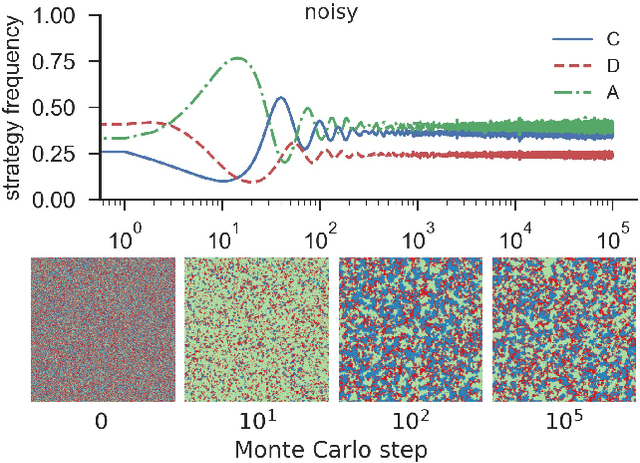
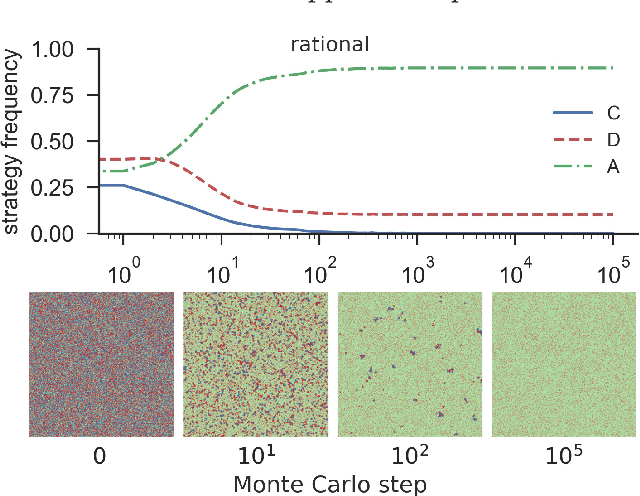
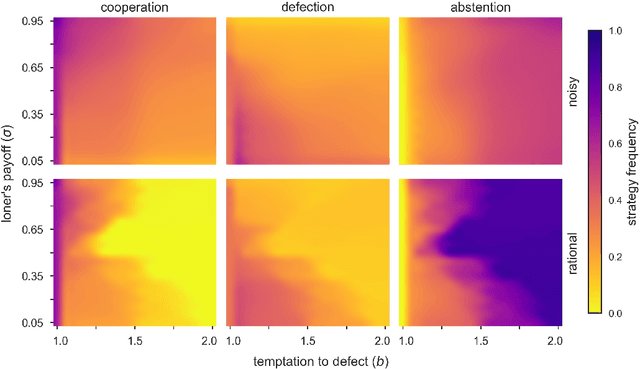
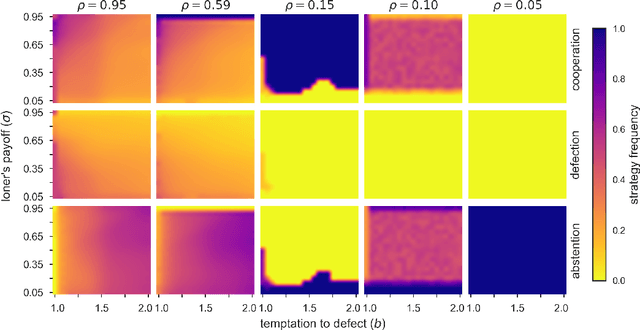
Abstract:It is generally believed that in a situation where individual and collective interests are in conflict, the availability of optional participation is a key mechanism to maintain cooperation. Surprisingly, this effect is sensitive to the use of microscopic dynamics and can easily be broken when agents make a fully rational decision during their strategy updates. In the framework of the celebrated prisoner's dilemma game, we show that this discrepancy can be fixed automatically if we leave the strict and frequently artifact condition of a fully occupied interaction graph, and allow agents to change not just their strategies but also their positions according to their success. In this way, a diluted graph where agents may move offers a natural and alternative way to handle artifacts arising from the application of specific and sometimes awkward microscopic rules.
Cooperation in the spatial prisoner's dilemma game with probabilistic abstention
Dec 10, 2018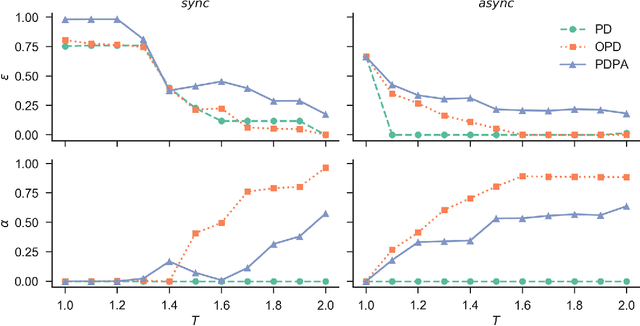
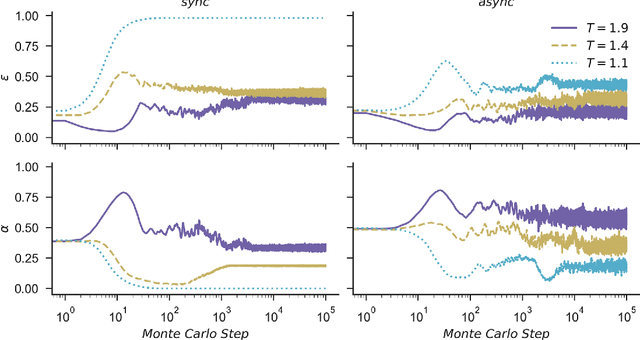
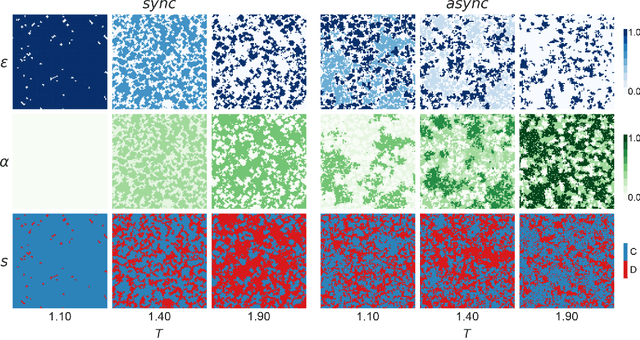
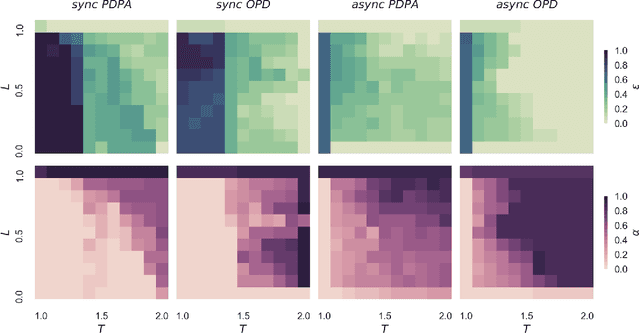
Abstract:Research has shown that the addition of abstention as an option transforms social dilemmas to rock-paper-scissor type games, where defectors dominate cooperators, cooperators dominate abstainers (loners), and abstainers (loners), in turn, dominate defectors. In this way, abstention can sustain cooperation even under adverse conditions, although defection also persists due to cyclic dominance. However, to abstain or to act as a loner has, to date, always been considered as an independent, third strategy to complement traditional cooperation and defection. Here we consider probabilistic abstention, where each player is assigned a probability to abstain in a particular instance of the game. In the two limiting cases, the studied game reverts to the prisoner's dilemma game without loners or to the optional prisoner's dilemma game. For intermediate probabilities, we have a new hybrid game, which turns out to be most favorable for the successful evolution of cooperation. We hope this novel hybrid game provides a more realistic view of the dilemma of optional/voluntary participation.
* 7 pages, 4 figures; published in Scientific Reports
Evoplex: A platform for agent-based modeling on networks
Nov 25, 2018
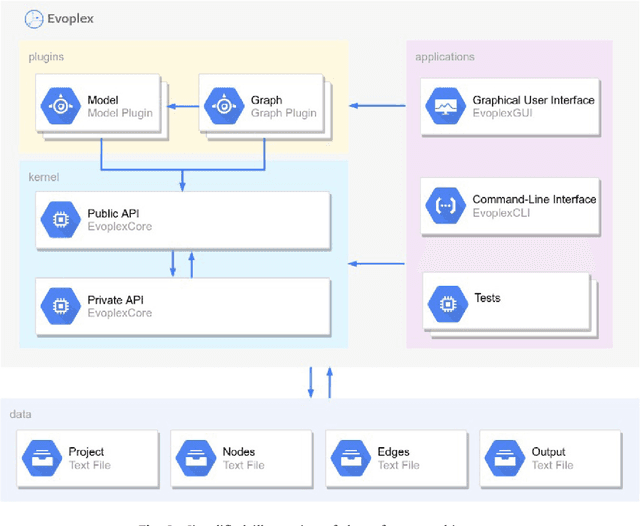
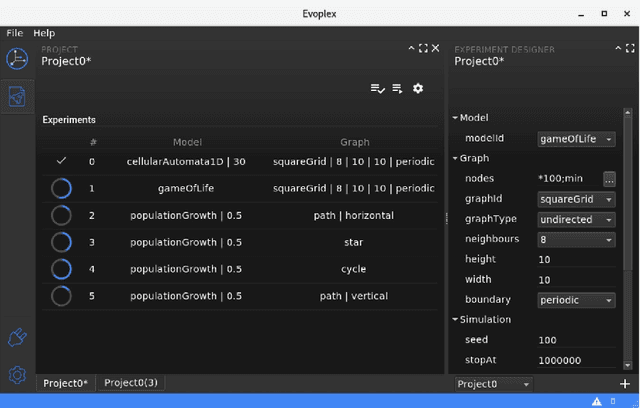
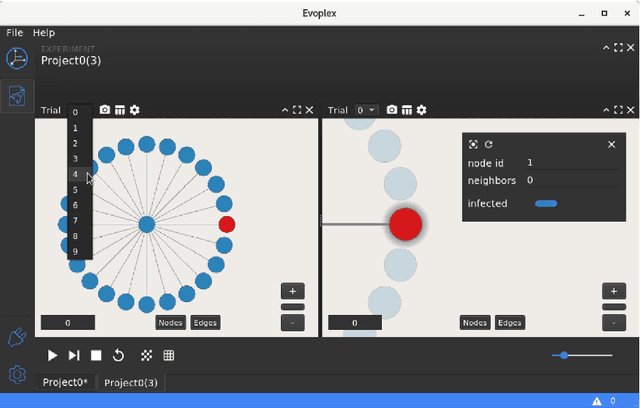
Abstract:Evoplex is a fast, robust and extensible platform for developing agent-based models and multi-agent systems on networks. Each agent is represented as a node and interacts with its neighbors, as defined by the network structure. Evoplex is ideal for modeling complex systems, for example in evolutionary game theory and computational social science. In Evoplex, the models are not coupled to the execution parameters or the visualization tools, and there is a user-friendly graphical user interface which makes it easy for all users, ranging from newcomers to experienced, to create, analyze, replicate and reproduce the experiments.
A Further Analysis of The Role of Heterogeneity in Coevolutionary Spatial Games
Nov 09, 2017
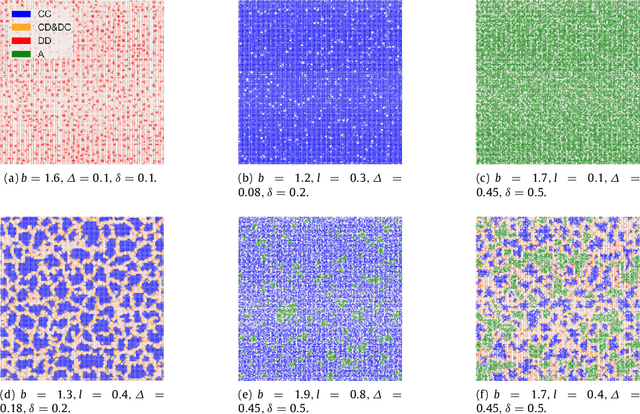
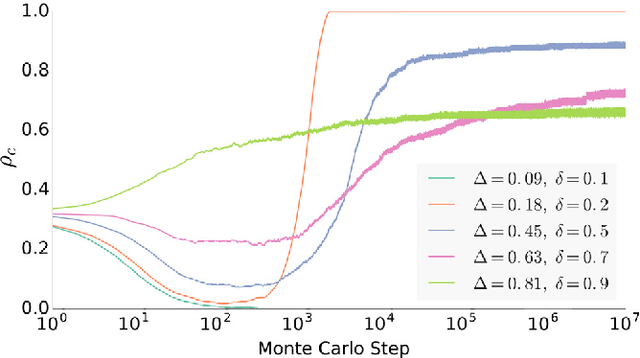
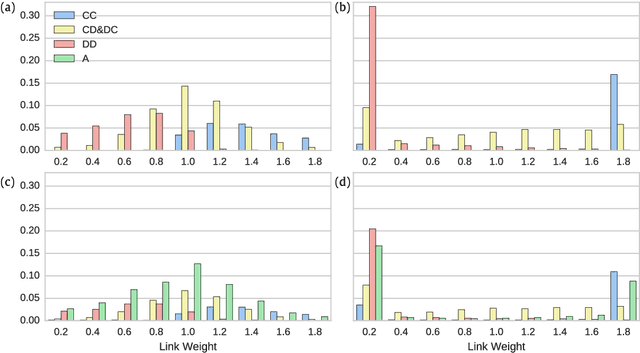
Abstract:Heterogeneity has been studied as one of the most common explanations of the puzzle of cooperation in social dilemmas. A large number of papers have been published discussing the effects of increasing heterogeneity in structured populations of agents, where it has been established that heterogeneity may favour cooperative behaviour if it supports agents to locally coordinate their strategies. In this paper, assuming an existing model of a heterogeneous weighted network, we aim to further this analysis by exploring the relationship (if any) between heterogeneity and cooperation. We adopt a weighted network which is fully populated by agents playing both the Prisoner's Dilemma or the Optional Prisoner's Dilemma games with coevolutionary rules, i.e., not only the strategies but also the link weights evolve over time. Surprisingly, results show that the heterogeneity of link weights (states) on their own does not always promote cooperation; rather cooperation is actually favoured by the increase in the number of overlapping states and not by the heterogeneity itself. We believe that these results can guide further research towards a more accurate analysis of the role of heterogeneity in social dilemmas.
The Impact of Coevolution and Abstention on the Emergence of Cooperation
Apr 28, 2017



Abstract:This paper explores the Coevolutionary Optional Prisoner's Dilemma (COPD) game, which is a simple model to coevolve game strategy and link weights of agents playing the Optional Prisoner's Dilemma game. We consider a population of agents placed in a lattice grid with boundary conditions. A number of Monte Carlo simulations are performed to investigate the impacts of the COPD game on the emergence of cooperation. Results show that the coevolutionary rules enable cooperators to survive and even dominate, with the presence of abstainers in the population playing a key role in the protection of cooperators against exploitation from defectors. We observe that in adverse conditions such as when the initial population of abstainers is too scarce/abundant, or when the temptation to defect is very high, cooperation has no chance of emerging. However, when the simple coevolutionary rules are applied, cooperators flourish.
The Optional Prisoner's Dilemma in a Spatial Environment: Coevolving Game Strategy and Link Weights
Sep 19, 2016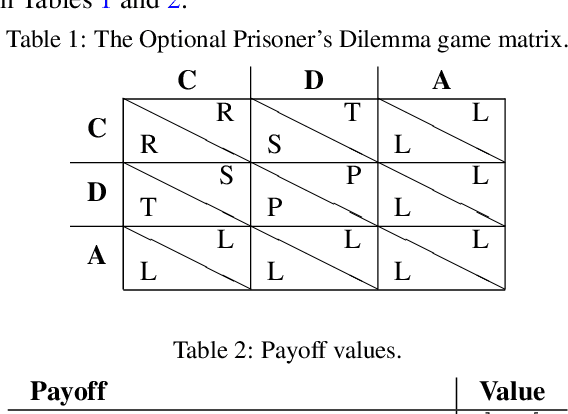
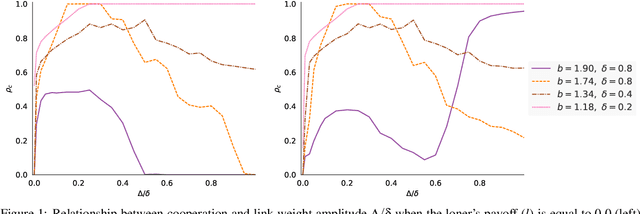
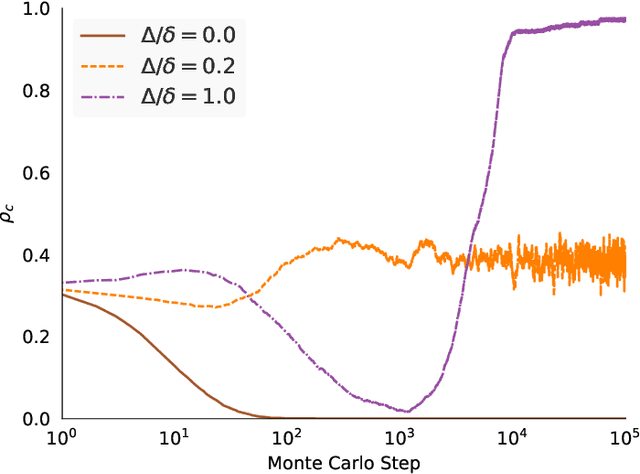
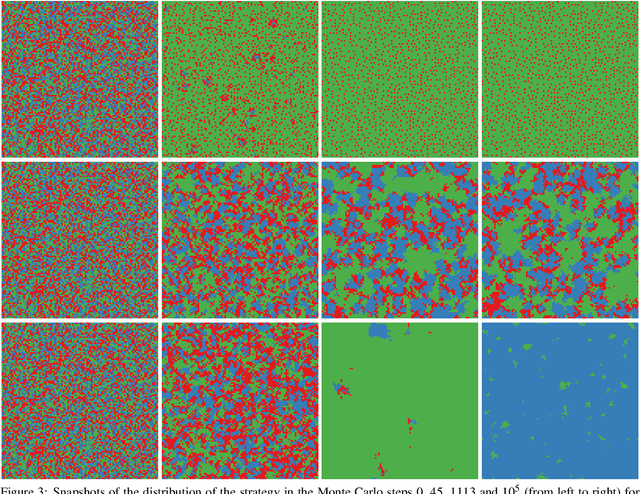
Abstract:In this paper, the Optional Prisoner's Dilemma game in a spatial environment, with coevolutionary rules for both the strategy and network links between agents, is studied. Using a Monte Carlo simulation approach, a number of experiments are performed to identify favourable configurations of the environment for the emergence of cooperation in adverse scenarios. Results show that abstainers play a key role in the protection of cooperators against exploitation from defectors. Scenarios of cyclic competition and of full dominance of cooperation are also observed. This work provides insights towards gaining an in-depth understanding of the emergence of cooperative behaviour in real-world systems.
* To be presented at ECTA 2016, Porto, Portugal
Simulation of an Optional Strategy in the Prisoner's Dilemma in Spatial and Non-spatial Environments
Aug 17, 2016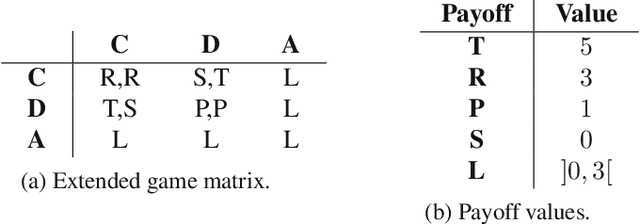
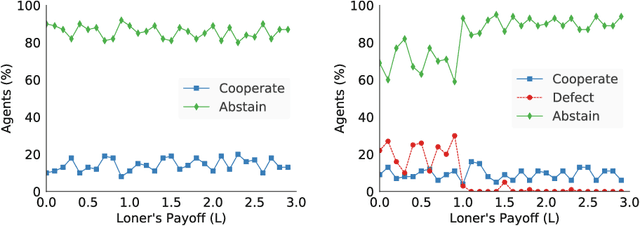
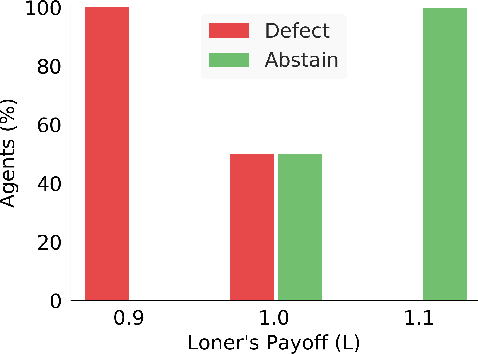
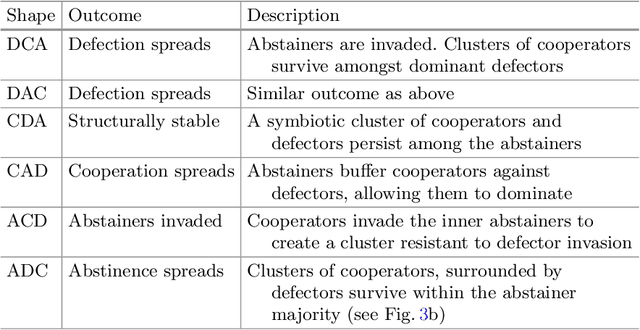
Abstract:This paper presents research comparing the effects of different environments on the outcome of an extended Prisoner's Dilemma, in which agents have the option to abstain from playing the game. We consider three different pure strategies: cooperation, defection and abstinence. We adopt an evolutionary game theoretic approach and consider two different environments: the first which imposes no spatial constraints and the second in which agents are placed on a lattice grid. We analyse the performance of the three strategies as we vary the loner's payoff in both structured and unstructured environments. Furthermore we also present the results of simulations which identify scenarios in which cooperative clusters of agents emerge and persist in both environments.
* 12 pages, 8 figures. International Conference on the Simulation of Adaptive Behavior
 Add to Chrome
Add to Chrome Add to Firefox
Add to Firefox Add to Edge
Add to Edge